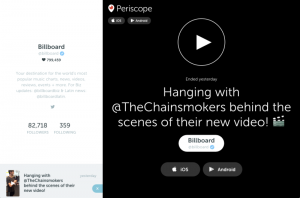
If you’re like 61% of Fortune 500 CEOs, you are probably not on social media. (CEO.com) Common reasons range from perceiving the risk as too great, to not seeing the value in it, to not knowing how to participate effectively. But in today’s economy being a visible voice of the company is essential to success for 3 reasons – opportunities for growth, winning the talent war and customer engagement.
Growth
The high-level business conversations occurring in social media today are opportunities for growth. Perhaps due in part to the Trump Administration’s engagement on social media, Twitter in particular, this level of social engagement had been increasing in the last year. By abstaining from industry-leading social media conversations, CEOs may miss the exchanges that lead to fast opportunities. Why Every CEO Should be on Social Media (DaSh factor) states that B2B decision-makers are using social media for research and also to make buying decisions. The report also dispels the myth that high level social media participation is best suited for B2C companies.
Talent
Attracting and retaining top talent begins at the C-suite level. Today’s talent is looking for a leader with whom they feel aligned. Culture and engagement have been identified as top concerns for companies this year. CEOs can use social media to better attract the best members for their team. Approximately 53% of millennials place more trust in information about a company when they obtain it through social media. (G&S Business Communications). Employee initiatives are much more successful when leadership actively participates. Research culled from a combined study by Hootsuite and LinkedIn found a 40% increase in employee engagement as a direct correlation to CEO or executive engagement. Engaged employees increase productivity, improve the customer experience, and drive revenue.
Customer Engagement & Retention
Today’s customers, especially those under the age of 40, are looking for visibility from the leaders of the brands they buy, and the ones they may buy. That means appearing across multiple channels, not simply where your marketing materials are distributed. When CEOs are visible on social media it helps build relationships with customers and prospects. Social CEOs have a positive impact on trust, reputation, and engagement, which also pleases investors, many of whom also engage via social media.
How to begin immersing themselves in the social media realm is an obstacle for many CEOs who simply do not have the time or inclination to learn a new skill, particularly one that is so public. The good news is that CEOs can have their social media team create and maintain that presence. The CEO may need only to monitor and participate as his or her comfort level allows. The aforementioned DaSh factor report offers a guideline from which to begin.
The biggest takeaway for reluctant CEOs is that, like it or not, social media visibility is a necessity not only for a brand, but for its leaders. Opportunities are being discussed, talent is evaluating potential employers, and customers want to believe in the leaders of the brands they buy. And when our competitors’ leaders are joining these conversations, can we afford not to?
Image credit: Shutterstock / Graziano Associates
Business & Finance Articles on Business 2 Community(11)







